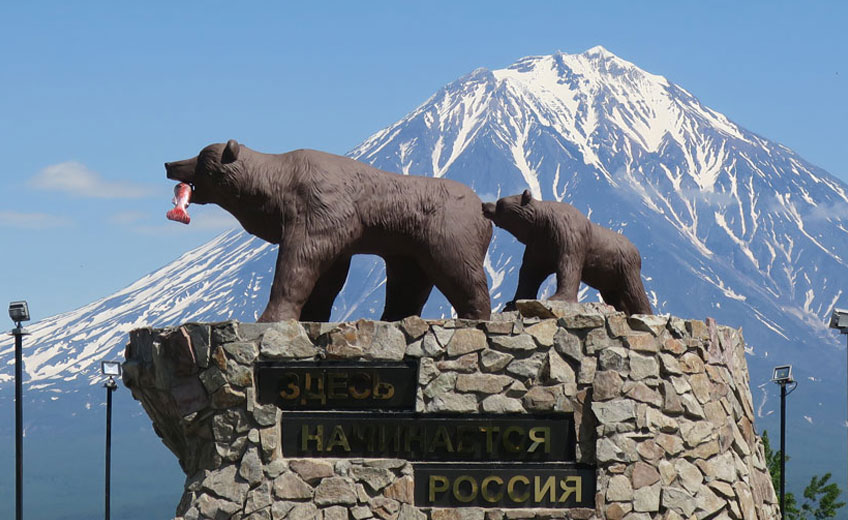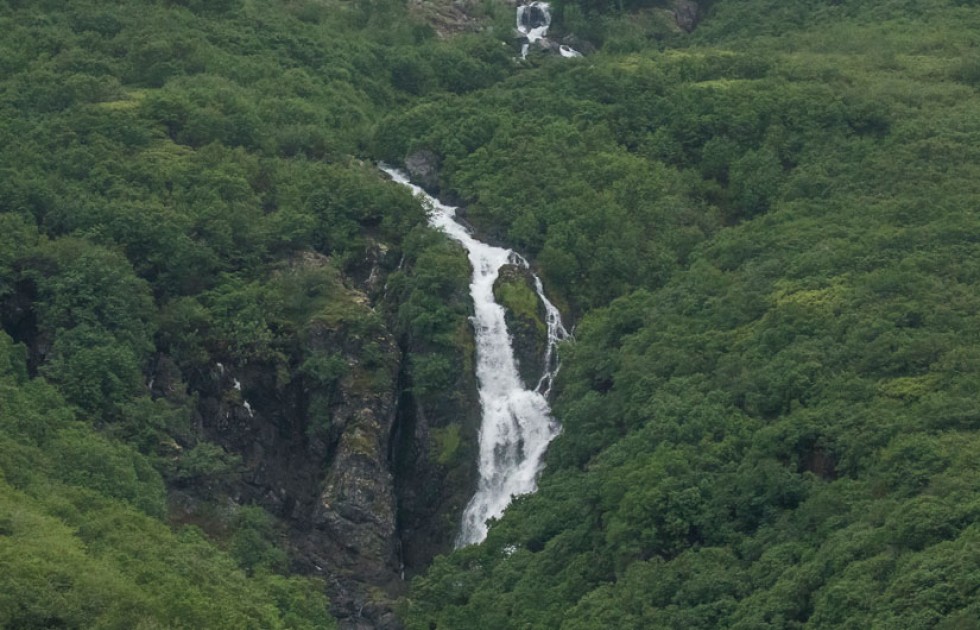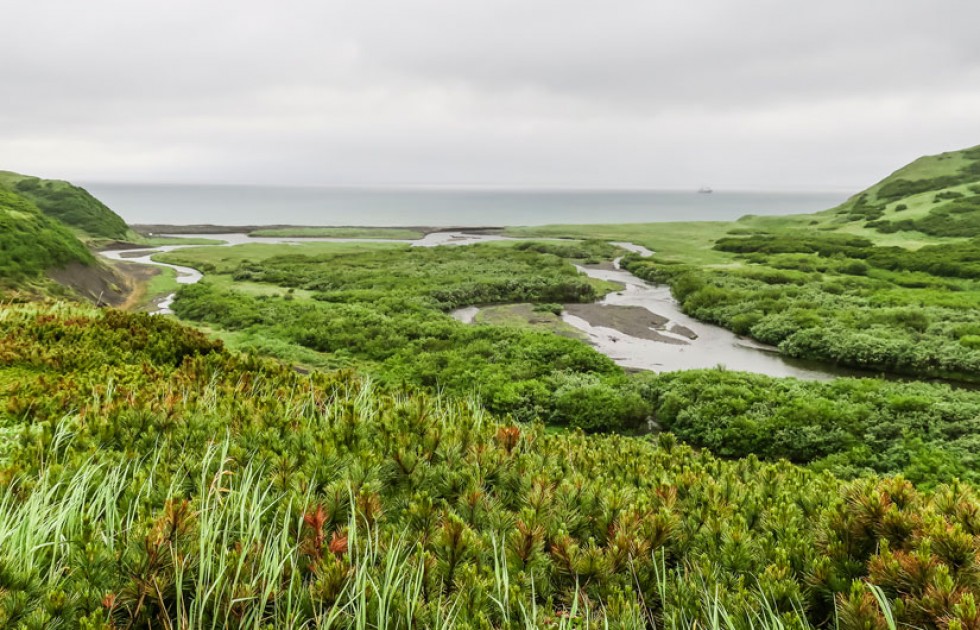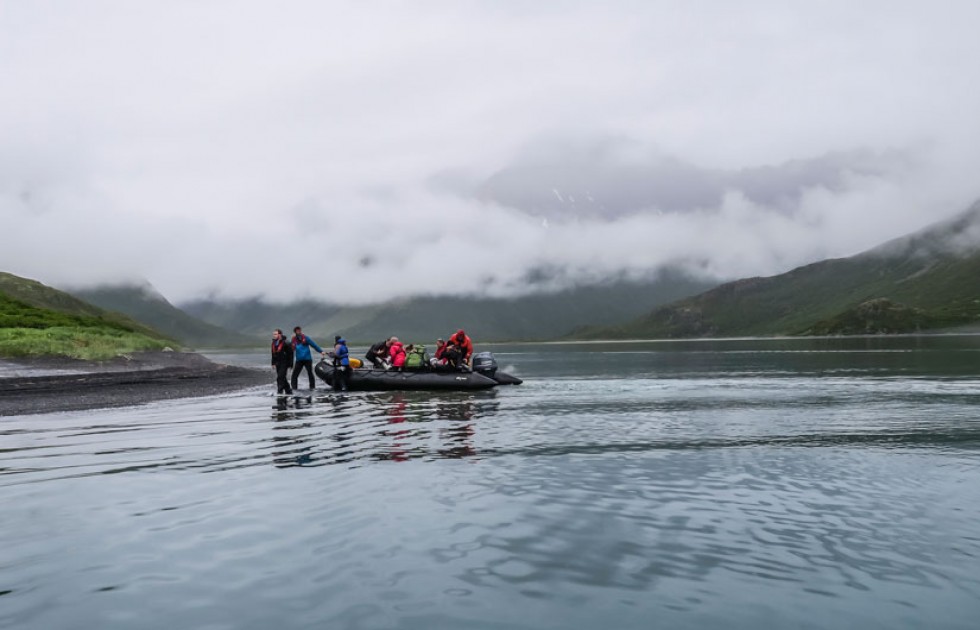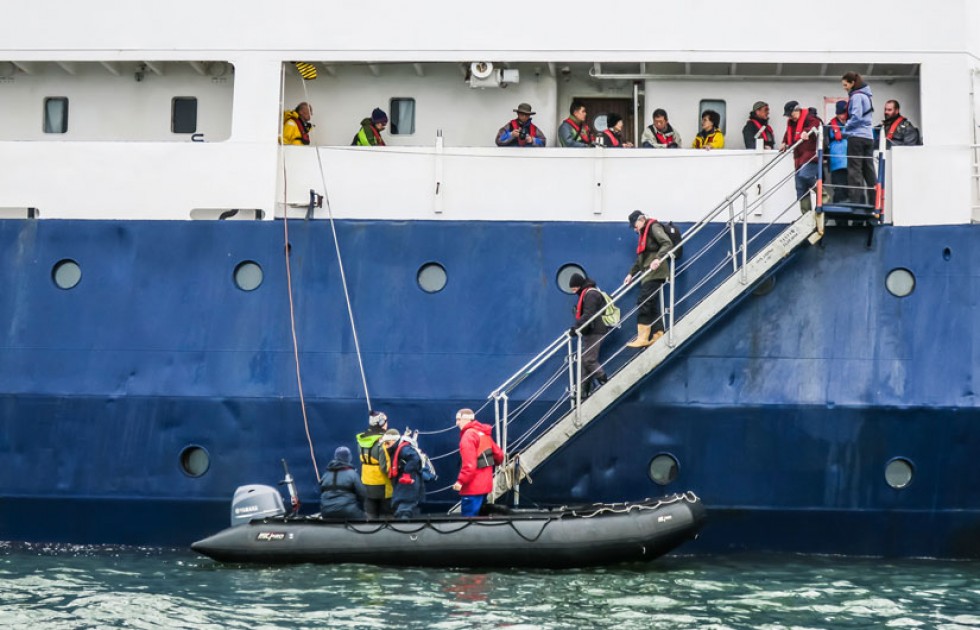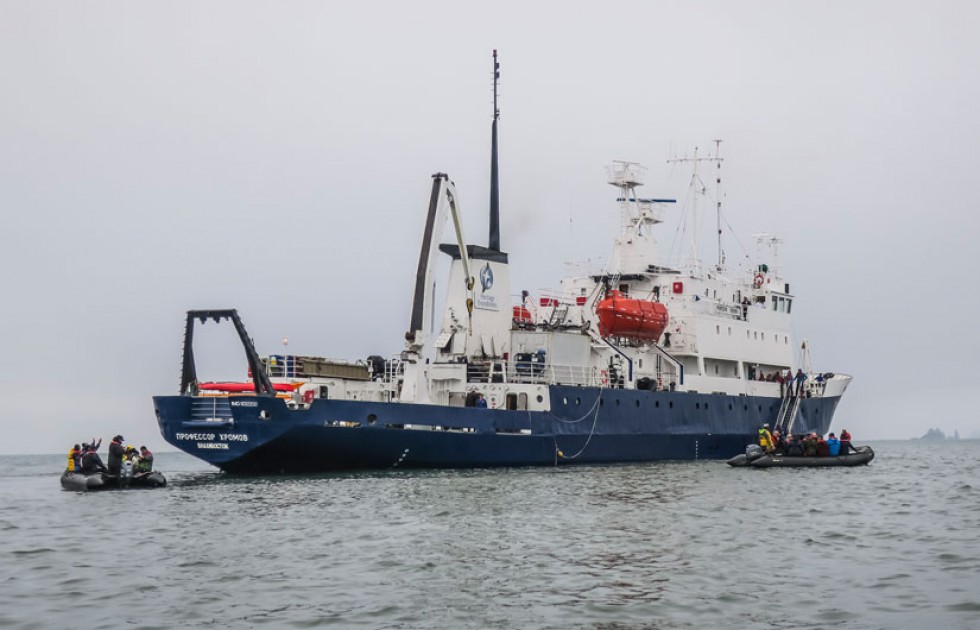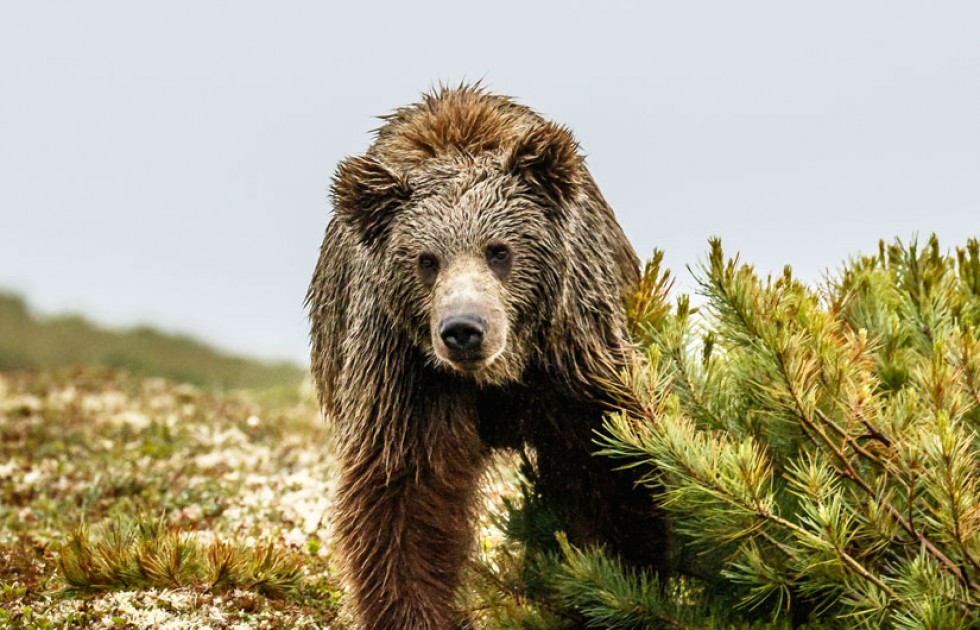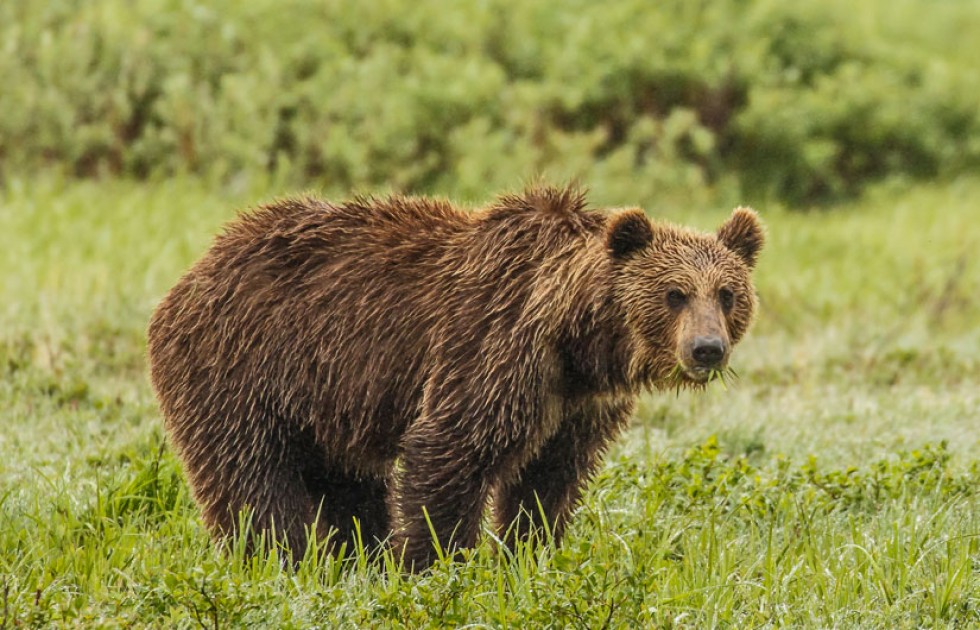While I was planning the trip, I learned that Kamchatka was known as “The Land of Volcanoes and Brown Bears” with 30 active volcanoes out of the total number of 300 volcanoes, listed as a world heritage site by UNESCO, and about 20,000 brown bears. Further research has revealed that Kamchatka brown bear or Far Eastern brown bear is believed to be the ancestor of the polar bear of the Arctic Circle and the Kodiak bear of Alaska. Brown Bear originated in Asia some 800,000 years ago and have evolved into 16 subspecies inhabiting Europe, China, Mongolia, South Asia, the Middle East, and North America.
Kamchatka brown bear is a very large bear, having a body length of 2.4 metres and standing 3 metres tall on hind legs. It weighs more than 650 kilograms. Although it is the ancestor of polar bear which is a carnivore, brown bear feeds on berries, grass, nuts, fish especially salmon, and is not dangerous to humans.
I flew from Bangkok to Seoul, Korea, then Vladivostok, Russia. After an overnight stay, I embarked the next morning on a domestic flight to the city of Petropavlovsk-Kamchatsky, the administrative centre of Kamchatka. On the way into the city, popularly called PK, I passed a sculpture of a brown bear and a cub, with a salmon in the mother’s mouth. The sculpture is a landmark of Kamchatka, along with a range of snow-capped volcanoes in the distance, confirming my arrival at “the land of volcanoes and brown bears”.
The real adventure began when I sailed on, Spirit of Enderby, with the other 47 passengers, cruising northward for 14 days along the coast of Bering Sea in northern Pacific Ocean. Spirit of Enderby is a fully-iced strengthened expedition vessel owned and managed by Heritage Expeditions, the founder of which is Rodney Russ, a New Zealander and a former biologist of New Zealand Wildlife Service, who is the active leader of the expedition team on the vessel.
During the first five days, the ship anchored at a few bays of Kamchatka and Commander Islands off the Kamchatka coast. The passengers embarked on the ship’s zodiacs to explore the area and to find wildlife. Several species of birds such as Steller’s sea eagle, one of the largest eagles in the world and a vulnerable species, Far Eastern curlew, an endangered species, whooper swan, Laysan albatross, glaucous-winged gull, tufted and horned puffins, and long-tailed duck which is another vulnerable species were spotted. Among the mammals sighted were small brown Arctic foxes, red foxes, sea otters, and Largha seals, but we were disappointed that no brown bear was seen.
Then on the sixth day the Spirit of Enderby anchored at Govena Peninsula in the remote Koryak region which was a brown bear habitat. We went on a zodiac cruise along the shore of the peninsula and were delighted to sight five brown bears. A bear and two cubs were running away from the beach up a mountain slope as our zodiacs came closer. The fourth bear was seen lying alone on a grassy slope in the distance.
It was the fifth bear which brought excitement to members of the expedition. We took the advice of Rodney Russ, leader of the expedition, to go up to a plateau on a hill overlooking three valleys and a stream flowing into the sea and to wait there for a bear to show up. Rodney had seen a number of bears at that spot a few times before.
We all sat or lay down on the grass and waited in the chilly weather of 12 degree Celsius under the light rain. After 30 minutes and no bear, some of us were thinking of heading back to the ship. Suddenly a young bear appeared quietly about 35 metres behind us walking in our direction. A little commotion ensued as we all got up raising our cameras trying to get the best shots of the bear and at the same time were uncertain of the bear’s action. As the bear came closer unperturbed by our presence, a member of the expedition team decided to fire a flare in the direction of the bear. The unexpected unfamiliar noise stopped the bear in its track and drove it away from us. Later we returned to the ship with the satisfaction of encountering and photographing a bear at close range.
During the next five days as the ship continued northward along the Kamchatka coast, we went on zodiac cruises twice a day into different bays and lagoons to search for bears. Kamchatka is truly a brown bear country as we sighted more than 40 bears during the whole trip.
Several of us who take pleasure in just seeing and photographing wildlife in their natural habitat felt sad when we learned that the Kamchatka Department of Wildlife Management gave permits to hunt brown bears charging up to USD10,000. We’ve come to understand why the brown bears we sighted on the shore of the bays and lagoons started running away into the forest or up the mountain slope as soon as they heard the noise of our zodiac engine. Their natural sense of survival must have warned them that the zodiacs might be carrying hunters who came to take their lives.
Despite such downside, I truly enjoyed the expedition on board the Spirit of Enderby and returned home satisfy with many images of Kamchatka brown bears and other wildlife as I had expected. This adventure of a lifetime has a sequel in the next issue of Elite+ with the stories on grey whales, Largha seals, and birds of Kamchatka.


